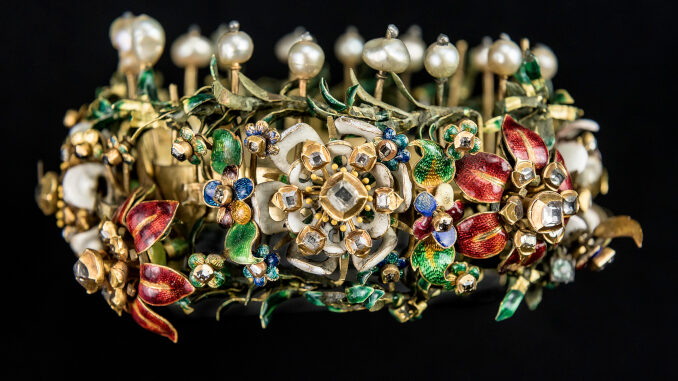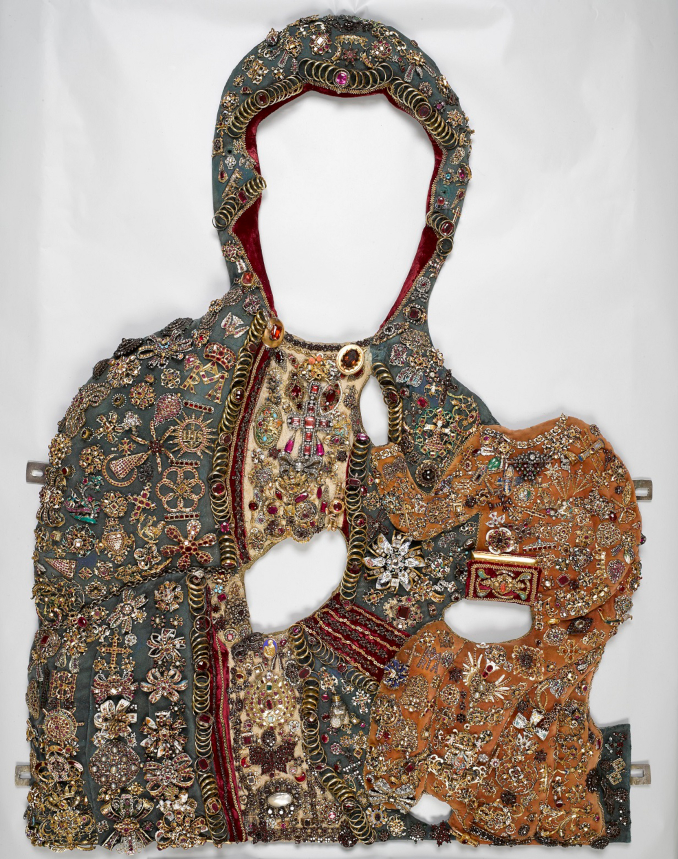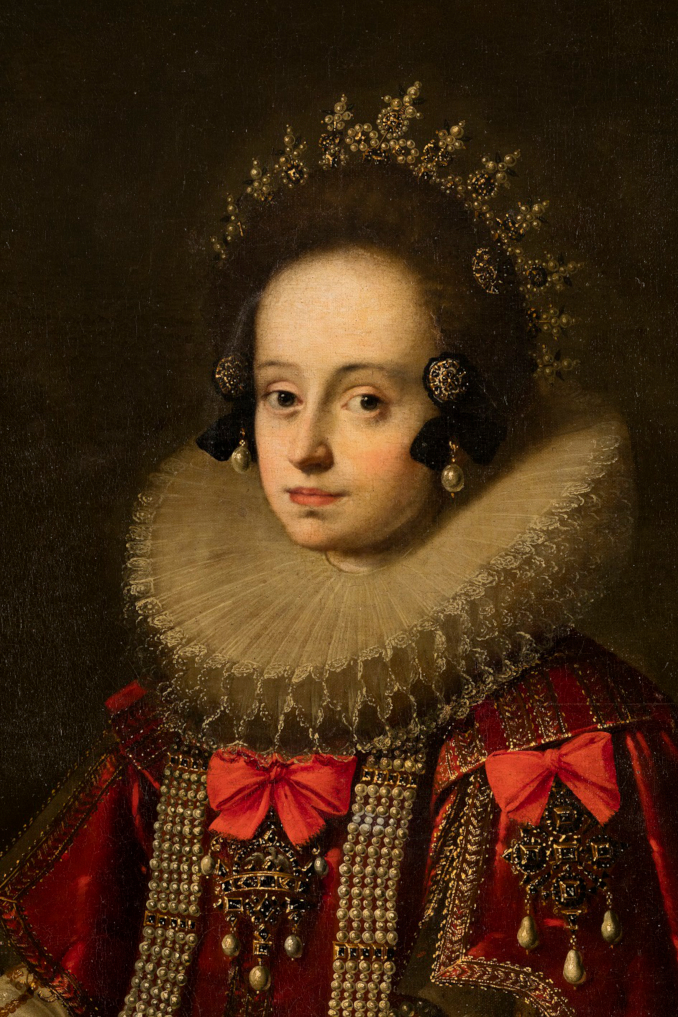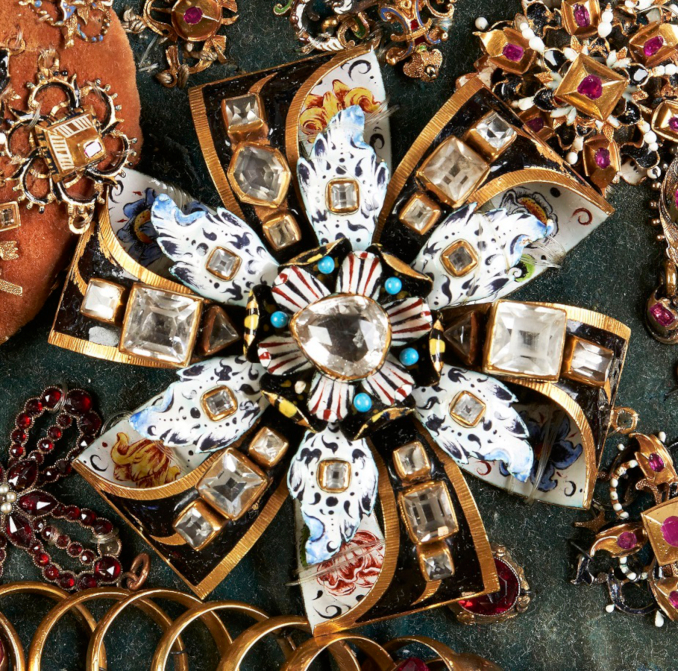
“I have seen so many gems I did not expect to see in one place. No Venetian or papal collection can compare”- a papal envoy praising in 1560 a treasury collection of the Polish king Sigismund Augustus.
By Nina Heyn – Your Culture Scout
European countries tend to proudly display their royal crown jewels at national monuments, regardless of what form of government they are currently having. The Tower of London is a perfect example – much of history of England and Great Britain can be told through the jewels stored and presented there. The Royal Castle of Warsaw in Poland not only was rebuilt from scratch after it was deliberately mined and destroyed by the German Army in 1944, but also it does not have any regalia within its walls. For a country that crowned its first king in AD 1025, it is a painful gap in national heritage. To remedy this cultural gap, the Royal Castle has just opened an exhibition entitled “To Rule and to Dazzle. Jewels and jewelry in the Polish-Lithuanian Commonwealth in the 16th and 17th c.” An impressive show of gold-and-jewels-dripping artifacts and related historical paintings presents 500 historical objects that document the ornamental art and craft connected to Polish royalty and elites. “A grand absentee of this exhibition is the Crown Treasury- we do not have it. The Crown Treasury that was being amassed since the king Wladislaw the Elbow High (early 14th c.) through the Vasa dynasty (17th c) does not exist. During the partition (of Poland) it was looted, taken away and appropriated” said Wojciech Falkowski, the director of the Royal Castle of Warsaw. In absence of the actual crown jewels, the exhibition is mounted with a collection gathered from over 80 places- the most famous Polish monastery and a Black Madonna shrine of Jasna Gora (Bright Mountain), other churches and monasteries in Poland and Lithuania, the Uffizi, the Louvre, and treasures held private hands in the US, Switzerland, Germany and Sweden.

Ruby “dress” for the image of the Black Madonna of Czestochowa. Votive art collection at Jasna Gora Monastery. Photo credit: Andrzej Ring, Lech Sandzewicz
The Jasna Gora shrine has lent for the first time for an outside display two “dresses” that were created to cover the image of Black Madonna. The fabric covers are adorned with diamonds, rubies, gold wedding rings, chains, bows, brooches and gems offered in thanks or as supplications. These votives have been placed there over centuries to create glittering covers for the sacred image. Among the monastery treasures at the exhibition there is a monstrance (a liturgical receptacle) made by a Warsaw goldsmith Waclaw Grodko to commemorate the 1655 siege of Jasna Gora when the Swedish army has unsuccessfully besieged the shrine defended by a band of monks. The siege has mobilized the Polish nation and turned the tides of war against the Swedish aggression. The three feet high, cross shaped monstrance is made out of 22 pounds of gold, 2366 diamonds, 2238 rubies, 81 emeralds, 30 sapphires and 214 pearls. While it is a rare occasion for these famous liturgical treasures to be displayed outside their church abodes, even more fascinating are little gems preserved from Polish Golden Era of power during the Jagiellonian and Vasa dynasties of the 16th and 17th century. An inventory of the Polish royal treasury that was created in 1599 and periodically updated over the next hundred years, lists objects such as monogrammed pendants, cameos with royal profiles, baroque pearl ornaments representing animals and mythical creatures, intricate chains, seals, pins, and small women’s pendants called “trifles.”

Part of a portrait of Queen Constance of Austria. ca 1600. Royal Castle of Wawel in Krakow.
However, no historical document can say as much about the power of the 16th c. Poland and the artistic taste of its royalty and wealthy citizens as it can be learned from paintings and gems displayed at this exhibition. For example, some gems belonged to one of the most powerful kings, Sigismund I The Old and his Italian wife Bona Sforza d’Aragona, a niece of Lodovico Sforza (Duke of Milan, da Vinci’s patron and most likely a man who ordered her father’s murder). Queen Bona was a fascinating historical character – an extremely educated Renaissance princess who brought Italian culture to an eastern empire, a scheming politician and a shrewd businesswoman. She also loved gems and jewelry and some of her treasures survived at various royal courts from her daughters’ dowries. There are also paintings of kings as toddlers, wearing jeweled amulets to protect them from childhood diseases. Other paintings of queens and wealthy women of prominence attest to the artistry of local goldsmiths and jewelers. Next to paintings there are actual ornaments (some were saved in private collections, buried in family crypts or sold to treasuries in other courts) that illustrate styles, images and craftsmanship of the era.

A gem bow, mid 17c. Poland. Votive art collection at Jasna Gora Monastery. Photo credit: Andrzej Ring, Lech Sandzewicz
For a country that has been looted, destroyed, partitioned and passed from one power to another over many centuries, it is not easy to preserve links to an illustrious past. Castles get destroyed surprisingly easily, written documents and paintings get burned. Jewelry is always treasured for its commercial value, and well treated even by looters and careless descendants, and it survives much better than other artifacts. Thanks to that Poland was able to recreate a bit of its glorious past through the exquisite baubles on display at its Royal Castle, even if only there for a few weeks (it is opened till early August).
Check It Out!
